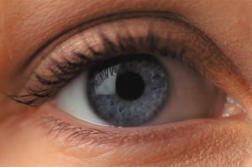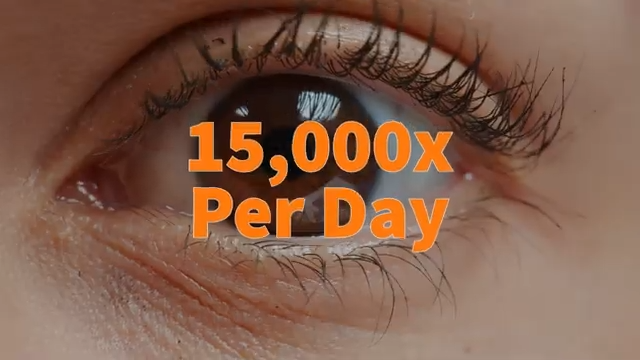Rithwick Rajagopal, M.D., Ph.D., Assistant Professor of Ophthalmology at Washington University School of Medicine in St. Louis talks about new research that may mean sight-saving treatments for the eight million people struggling with diabetic eye damage.
Interview conducted by Ivanhoe Broadcast News in April 2016.
I wanted to ask you a little bit about diabetic retinopathy, can you explain what that is for our viewers?
Dr. Rajagopal: Diabetic retinopathy is a very common disorder of the eye that affects at least 20% of people with diabetes, if not more. Currently there are about eight million Americans affected by diabetic retinopathy and a significant portion of these folks have blinding illnesses from this disease.
Can you tell me what some of the symptoms are, what happens to the vision and what are they seeing or not seeing?
Dr. Rajagopal: Probably the most common symptom is that people can’t see very clearly. People come in describing loss of vision; they will describe not being able to read as well as they used to read. Not being able to see signs at a distance in their car. They may lose the ability to sense color the same way they did or even sense contrast. All of these things would potentially affect somebody with diabetic retinopathy.
Major quality of life issues?
Dr. Rajagopal: In multiple studies the loss of vision specifically due to diabetic retinopathy is a huge contributor to loss of quality of life.
At what point are many of these cases diagnosed? Is there already some damage that cannot be repaired?
Dr. Rajagopal: That’s a very key point and one of the reasons why we initiated this study is that currently diabetic retinopathy is diagnosed and treated at relatively late stages of disease. We believe that there is a significant part of visual loss that is not addressed by current therapies.
What are some of the common current therapies?
Dr. Rajagopal: A few years ago, the most common therapies were laser treatment to the eye and surgery to remove things like blood that might be trapped in the eye. Now, most common treatment is injection of drugs directly into the eye. These usually have to be delivered very frequently, and as you can imagine people don’t really like to be stuck in the eye as frequently as we do it. The drugs do have side effects. They’re relatively safe but they do have some important side effects.
Tell me a little bit about your research.
Dr. Rajagopal: Our research involves modeling diabetic retinopathy in animal models and staging the disease in terms of what the earliest forms of vision loss are that occurs in these animals and then following these animals over time to precisely identify the different stages of disease.
What are the implications of being able to pinpoint—first I should ask you what have you found?
Dr. Rajagopal: Interestingly, we initially performed the study to see if we could develop a better model for diabetic retinopathy. Probably the most common cause of diabetes across the world is obesity and so we decided to make animals obese by feeding them a very fatty diet which is something that a lot of us are probably guilty of doing. This causes a lot of health problems in terms of metabolic disease. When we set about making these animals obese by diet, they developed disease in their eyes but interestingly they did so in a very slow manner. What we found was that the disease induced by diet underwent several distinct stages. The very last stage is what is typically considered diabetic retinopathy. It’s what’s typically treated clinically. The late stage in the animal disease is really the earliest point that we’re treating patients with diabetes. We were able to identify a much earlier stage of the disease in which only neural deficits of the retina occurred. What I mean by that is that we could detect subtle changes in vision prior to the animals developing issues with the retinal blood vessels. It’s the issues with blood vessels that are typically thought to cause diabetic retinopathy.
What are the implications, what does this mean for humans?
Dr. Rajagopal: That’s a great question. We think that there are two potential implications. One is that the disease could be detected earlier if we’re able to translate some of these findings into clinical practice. We might be able to develop easier tests of visual function. Eye tests for example that might be able to tell us if one person is at high risk of developing advance stages of diabetic retinopathy whereas another person may not be. It will allow us to detect the disease earlier and then maybe also divide people in to higher and lower risk groups. Then the second implication is simply to understand exactly what goes wrong in the early stages of disease in order to develop better therapies that can be used in conjunction with current therapies or maybe even to replace current therapies at some point.
How far away is this from bench to bedside before some of this research could be used for humans?
Dr. Rajagopal: We’re still in the early stages of this work and so we anticipate it will still be several years, probably ten or more years before this actually would be translatable to humans affected by this disease.
The patient we talked to Ms. Alpan. Do you remember what stage she was?
Dr. Rajagopal: Yes, actually she was at an advanced stage of the disease in which she had bleeding into both eyes and required surgery in both eyes to restore her eye sight. Now thankfully in her case we were able to restore much of the eye sight that she had lost. But for the vast majority of folks with that level of diabetic retinopathy return of vision is not the norm it’s the exception. We got lucky with her but we’re hoping to improve outcomes for other patients by attacking this disease at earlier with newer therapies.
END OF INTERVIEW
This information is intended for additional research purposes only. It is not to be used as a prescription or advice from Ivanhoe Broadcast News, Inc. or any medical professional interviewed. Ivanhoe Broadcast News, Inc. assumes no responsibility for the depth or accuracy of physician statements. Procedures or medicines apply to different people and medical factors; always consult your physician on medical matters.
If you would like more information, please contact:
Judy Martin
Public Relations
314-286-0105
Sign up for a free weekly e-mail on Medical Breakthroughs called
First to Know by clicking here.




